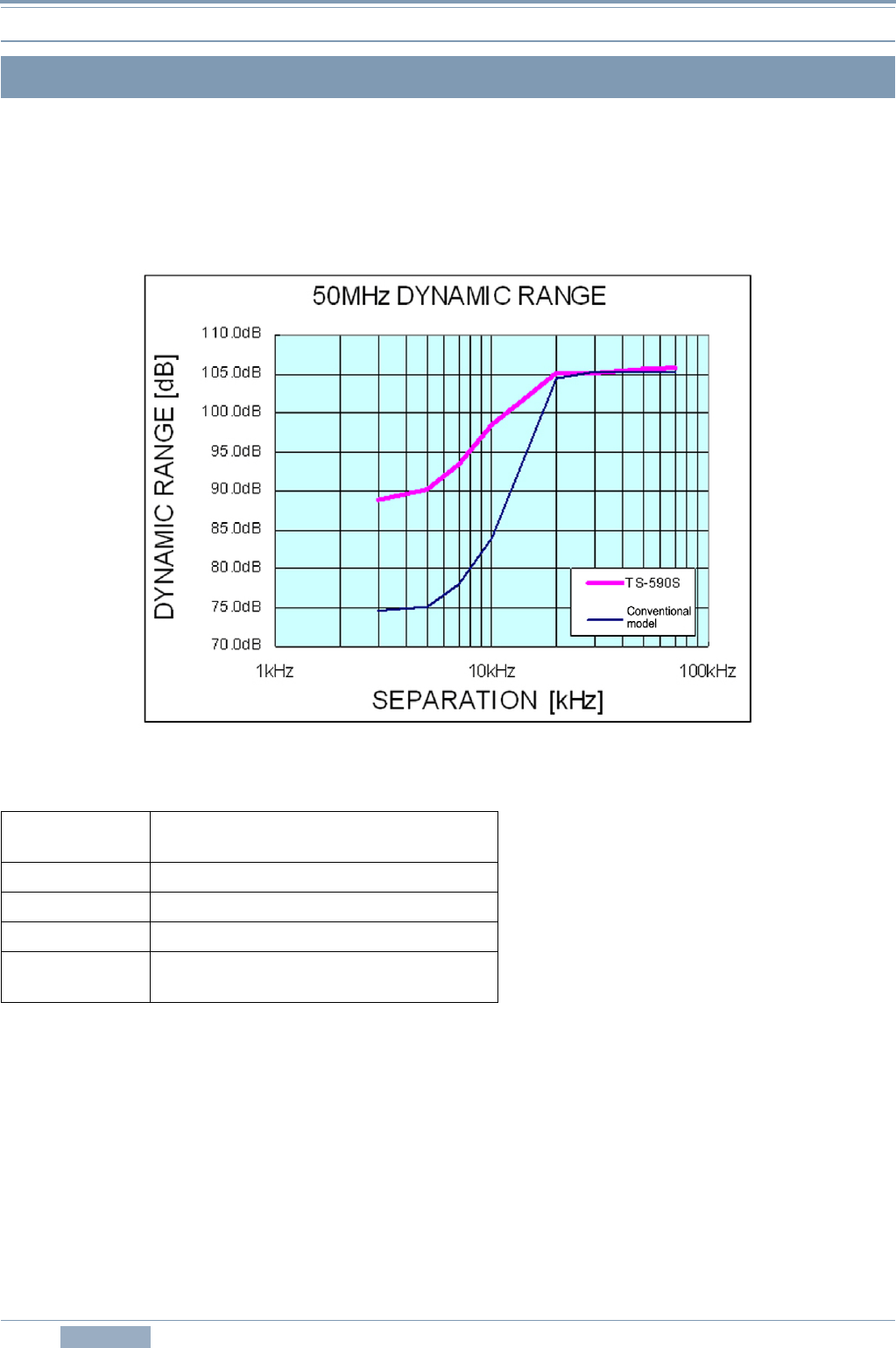
1 RECEPTION
8 CONTENTS TS-590S
Difference of characteristics due to the pass bandwidth in the roofing filter can be viewed in graphs in
Figure 1-5 and Figure 1-6. So, let’s see the characteristics of the up-conversion system in which the
same front end configuration is used as previous models. We will explain using the measurement
result that compares the dynamic range characteristics of TS-590S and of previous models in the 50
MHz band.
Figure 1-7 Dynamic Range in the 50 MHz Band
Measurement Conditions:
(The measurement method is the same as that was applied to 14.2 MHz.)
In the 50 MHz band, the signal is received with up conversion on both the TS-590S and the TS-480S.
If the separation between the target signal and the interfering signal drops below 20 kHz, the dynamic
range decreases on both transceivers. However, on the TS-590S, the outcome is improved for 15 dB
even within the pass bandwidth of the MCF.
This is thanks to the drastic modification of circuitry of the up-conversion section that was reviewed
coupled with the down-conversion path being added.
The same circuit is also used in WRC bands and in general coverage receiving as well as in the
50 MHz band, and therefore the equivalent performance improvement is made in those bands.
1.3 Up Conversion
Receive
Frequency
50.200 MHz
Mode CW
Pass bandwidth 500 Hz
PRE AMP OFF
Comparison
target
TS-480S (equipped with YF-107C CW filter)


















